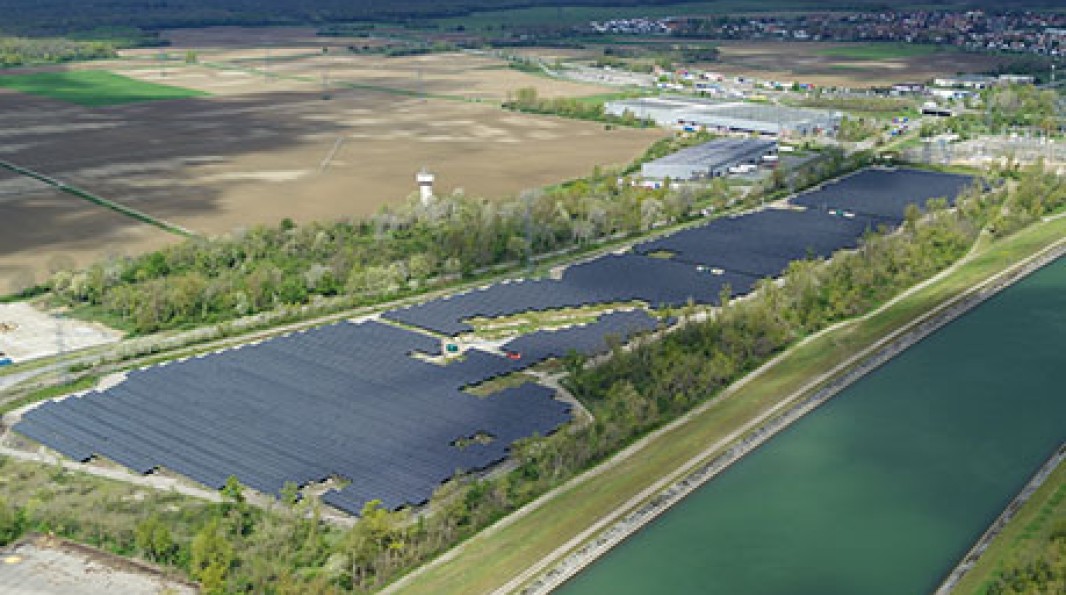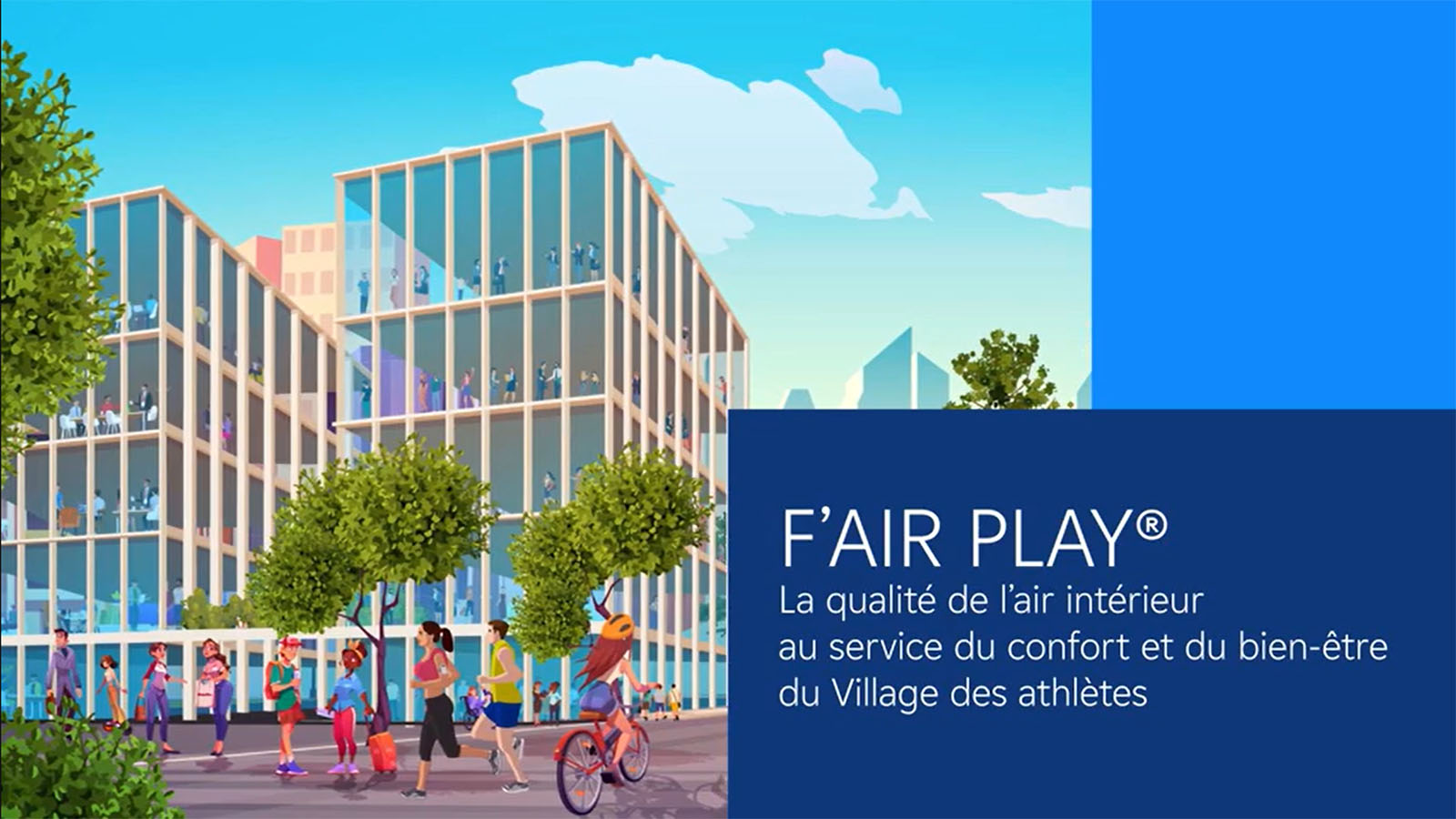For these Games, the Paris 2024 Organizing Committee for the Olympic and Paralympic Games was aiming for the smallest record: halving the event's carbon footprint compared with the average for London 2012 and Rio 2016 (i.e. 3.5 million tonnes CO₂ equivalent)⁽¹⁾.
100% renewable electricity...
From the headquarters of the organizing committee to the Olympic and Paralympic competitions, EDF supplied 100% renewable electricity. This decisive contribution to the OCOG's environmental ambitions was made possible thanks to the expertise of EDF SA and the six EDF Group subsidiaries included in the partnership: EDF Renouvelables, EDF solutions solaires, EDF PEI (Production Electrique Insulaire), Dalkia, Hynamics and Izivia.
... and 100% traceable
For each of the Paris 2024 sites and infrastructures, EDF has provided guarantees of origin. These certify that a quantity of electricity of renewable origin⁽²⁾equivalent to the consumption of these sites has indeed been injected into the electricity grid, from the EDF Group's 8 generating parks located in France. This is referred to as “hourly concomitance” between the generation of the parks and the consumption of the sites.
This concomitance is certified thanks to a blockchain specially designed for the energy world. It is combined with an analysis tool developed by EDF experts, for unquestionable data traceability.
In concrete terms, giving Olympic venues the energy to shine means responding to:
-
80%
of the needs of the reception and information center for international delegations
-
70%
of the needs of the Athletes' Village shopping center (between 7 a.m. and 7 p.m.)
Complementary renewable electricity generation facilities
Spread across the country, 8 wind farms were selected to meet the renewable electricity needs of the Olympic and Paralympic venues. This geographical network maximized the abundance of wind and solar power, making the most of the weather conditions.
-
6 wind farms
-
2 solar farms

Ottmarsheim solar park
Incorporating an ecological corridor, the Ottmarsheim solar park is also the largest in Alsace. Its 28,000 photovoltaic panels were put to work throughout the Paris 2024 Olympic and Paralympic Games.

Lazer solar park
The Lazer solar park (Hautes-Alpes), one of the first in Europe to implement innovative floating photovoltaic technology, was among the sites that produced renewable electricity fed into the grid during the Paris 2024 Olympic and Paralympic Games.

Chemin-d'Ablis wind farm
The Chemin-d'Ablis wind farm in the Eure-et-Loir region is one of 8 sites selected for the production of electricity from renewable sources. It is one of the largest wind farms in France.
Exemplary low-carbon solutions
The technological innovations deployed by the EDF Group have made Paris 2024 a showcase for sustainable development.
-
A photovoltaic shade
It provided shelter from both sun and bad weather. The shade of the Athletes' Village bus station also produced part of the energy needed for the Village's electricity consumption, thanks to its 1,500 m² of solar panels.
-
A floating solar power plant
Located on the River Seine, this foldable, demountable power station housed 720m² of photovoltaic panels, helping to power the Olympic Village. Stored in a container, its pre-wired panels could soon meet the electricity needs of barges elsewhere in France.
-
800 charging stations
Spread across several competition venues, the charging stations supplied power to the electric vehicles in the Paris 2024 fleet, at the same time as transmitting electricity to the grid. They will be reused at EDF sites, whose fleet (45,000 vehicles) will be 100% electrified by 2030.
Two world firsts for greater energy efficiency
Two innovations have made it possible to reduce the energy footprint of the tertiary building in the Les Belvédères district, in the heart of the Athletes' Village: Flowcast® & F'Air Play®.
They were designed and developed by Dalkia, with the participation of other EDF Group subsidiaries and entities: EDF solutions solaires, DREEV, Agregio Solutions, Izivia, EDF R&D and EDF Pulse Connect.
Flowcast®: to reduce your bill... and your electricity consumption

This solution enables buildings to reduce the amount of electricity they consume from the grid, and to smooth out peaks in consumption through real-time, predictive control.
Flowcast® relies on 3 levers :
- rooftop photovoltaic production, thanks to panels installed by EDF ENR, meeting users' daily needs in their living and working spaces (ventilation, cooling, heating... );
- the storage of this electricity (on the one hand in the building's batteries, and on the other in electric vehicles, thanks to the bidirectional technology of the charging stations developed by DREEV);
- the control of the building's electrical system and uses by predictive algorithms devised by Agregio Solutions, in order to use electricity at the lowest cost and with the lowest carbon impact.
F'Air Play®, to say goodbye to pollutants without increasing energy consumption

This air filtration system identifies, measures and analyzes indoor and outdoor pollutants.
F'Air Play® uses two filtration systems:
- phytoremediation (air circulates through a wall of plants, trapping pollutants in the roots) ;
- molecular filtration technology (pollutants and fine particles are trapped inside a battery of high-performance filters).
In addition, predictive algorithms enable air renewal to be optimized in advance to limit the entry of pollutants into the building.
⁽¹⁾ Within the meaning of current regulations and in particular in compliance with guarantee of origin mechanisms.
⁽²⁾ The carbon footprint of the Paris 2024 Games was not expected to exceed 1.5 million tonnes of CO₂, i.e. half the average of previous Summer Games. Source: Paris 2024 website - Halving the carbon footprint of the Games.

